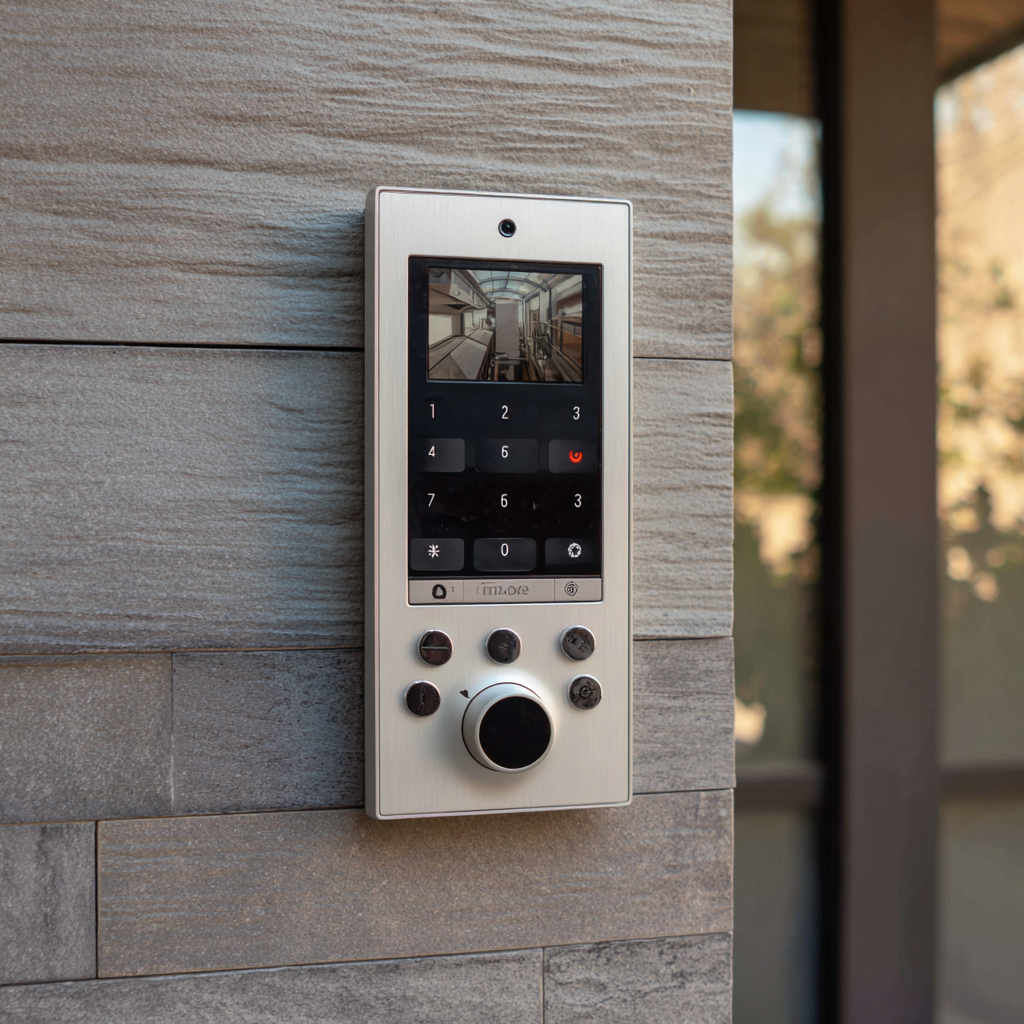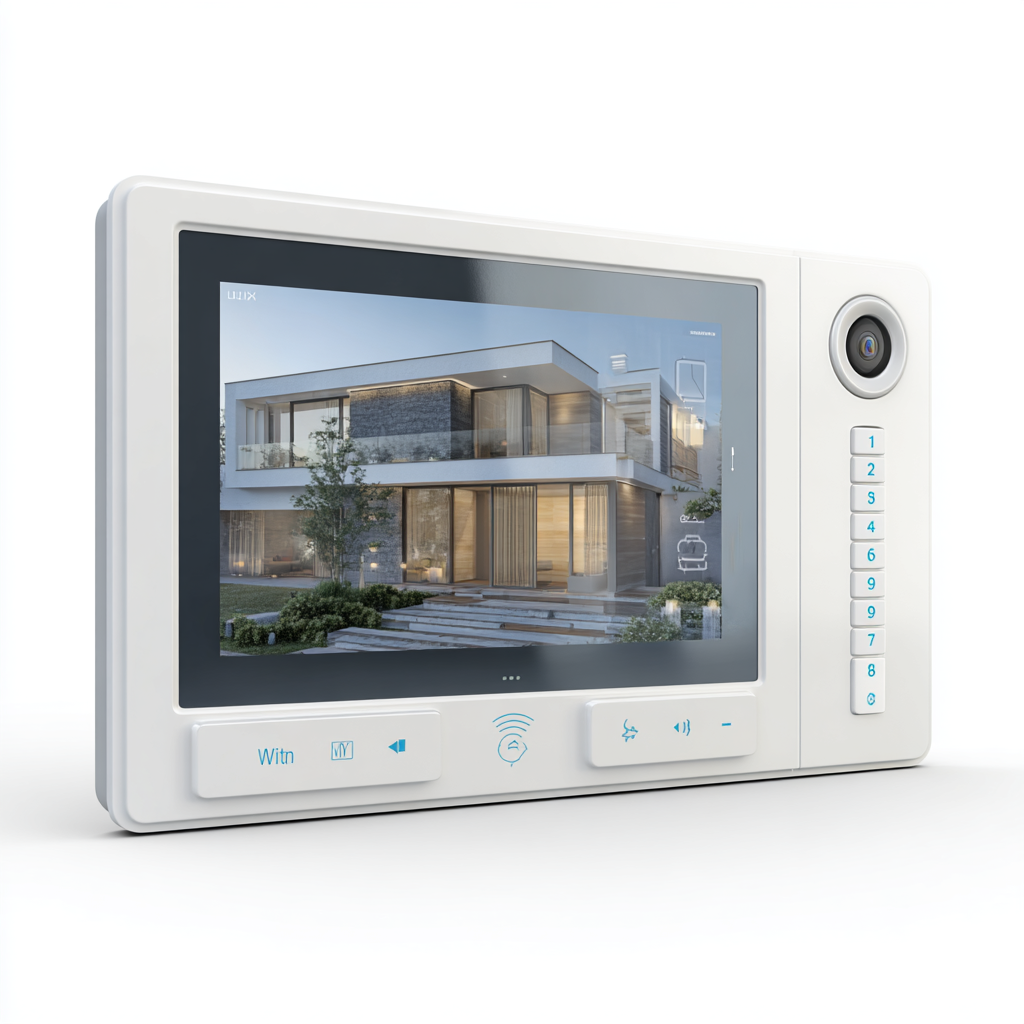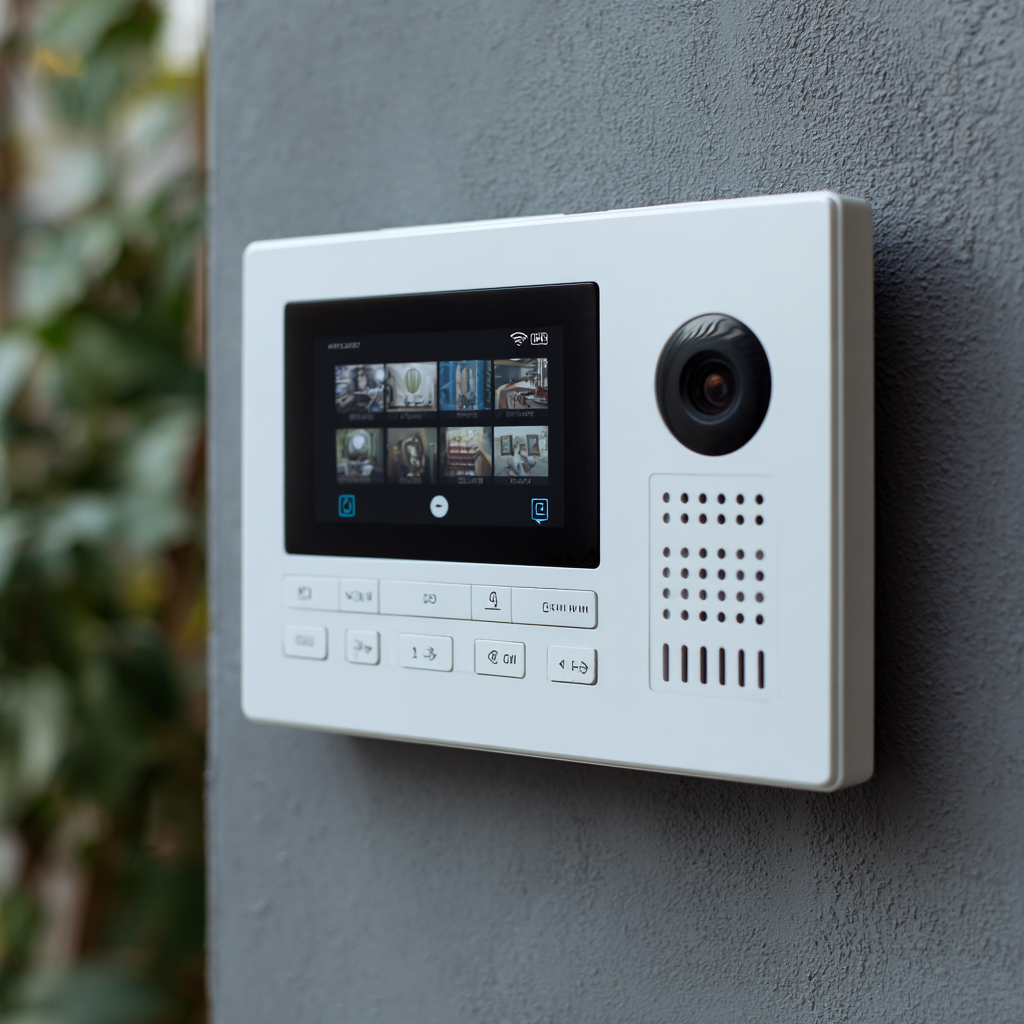As home security becomes an increasingly critical concern for homeowners, the adoption of advanced technologies like video intercom systems is on the rise. According to a recent market research report by MarketsandMarkets, the global intercom systems market is projected to reach $3.5 billion by 2025, with video intercoms driving significant growth due to their enhanced security features and user-friendly interfaces. Video intercom for home installation has not only transformed the way we communicate with visitors but also added an essential layer of protection against potential intruders. By integrating audio-visual capabilities, these systems empower homeowners to monitor their premises in real-time, thereby reducing the risk of home invasions. In this ultimate guide, we will explore the various factors to consider when choosing the best video intercom for home security needs, ensuring you make an informed decision that fits your unique requirements.

When selecting a video intercom system for your home security, there are several key features to consider to ensure it meets your needs. First and foremost, video quality is essential. Look for systems that offer HD resolution to provide clear images of visitors. Additionally, consider the field of view; a wider lens can capture more of the area in front of your door, reducing blind spots.

Another critical aspect is connectivity. Many modern video intercom systems come equipped with Wi-Fi capabilities, allowing for remote access via smartphones or tablets. This means you can see and communicate with visitors even when you’re not at home. Furthermore, think about the additional functionalities such as night vision, two-way audio, and motion detection alerts. These features significantly enhance the security and convenience of your intercom system, allowing for greater peace of mind and interaction with your visitors.
When it comes to enhancing your home security, choosing between wired and wireless video intercom systems is crucial. Wired video intercoms typically offer a more stable connection and higher video quality, making them a reliable choice for homeowners concerned about consistent performance. They can also provide additional features such as intercom functionality and integration with existing home security systems. However, installation can be more labor-intensive, as it often requires running cables through walls and ceilings.
On the other hand, wireless video intercom systems provide ease of installation and flexibility, especially for those who may not want to commit to extensive modifications in their home. With many modern wireless options, you can set up the device quickly with minimal effort, making it ideal for renters or those seeking a straightforward upgrade. These systems often come equipped with advanced features, such as motion detection and remote monitoring through smartphone apps, which can significantly enhance your home's security by allowing you to monitor visitors and deliveries from anywhere. As technology continues to advance, both wired and wireless options are increasingly becoming more reliable, providing homeowners with a variety of choices to suit their specific security needs.
When selecting a video intercom system for your home, understanding the importance of video quality and night vision cannot be overstated. According to a report by MarketsandMarkets, the global video intercom market is expected to reach $2.6 billion by 2025, highlighting a growing awareness of security technologies among homeowners. A high-definition resolution of 1080p or better is crucial, as clearer video feeds allow for better identification of visitors and potential intruders. Research indicates that over 60% of burglaries occur at night, making night vision capabilities essential. Systems equipped with infrared LEDs can provide visibility even in complete darkness, significantly improving home security.
Moreover, video quality directly impacts user experience. A survey conducted by TechCrunch revealed that 78% of consumers prioritize video clarity in their security systems. Enhanced video features, such as wide-angle lenses, can capture more of the scene, providing comprehensive coverage without blind spots. Additionally, modern intercoms often incorporate advanced image processing techniques, ensuring that even in challenging lighting conditions, images remain sharp and discernible. These attributes not only aid in deterring crime but also contribute to peace of mind for homeowners, making the choice of a video intercom with superior video quality and night vision a critical consideration for enhancing home security.
In today's rapidly evolving security landscape, integrating smart technology into home security systems has become essential. Video intercoms, once considered a luxury, are now integral in sophisticated home automation setups. According to a report by Research and Markets, the global video intercom market is projected to grow at a CAGR of 8.3% over the next five years, reflecting the increasing demand for enhanced security features in residential environments.

Modern video intercoms not only facilitate communication but also offer seamless connectivity with other smart devices. For instance, homeowners can connect their video intercom systems to smart locks and camera systems, allowing them to monitor and control their home entrances from their smartphones. The Security Industry Association reported that 57% of homeowners prefer integrated systems for a more cohesive security strategy. This level of integration not only enhances security but also adds convenience, as users can access various aspects of their home automation system through a single interface. Embracing these smart technologies can significantly elevate home security while providing peace of mind.
When considering a video intercom system for your home, budgeting plays a crucial role in ensuring you find the right balance between cost and features. According to a recent report by MarketsandMarkets, the global video intercom market is projected to grow from $1.4 billion in 2021 to $2.5 billion by 2026, reflecting the increasing importance homeowners place on security. This growth highlights the necessity of investing in technology that not only fits within your financial parameters but also addresses your security needs.
To achieve this balance, it's essential to evaluate what features are truly necessary for your household. Basic systems can start from $100, while advanced systems with high-definition video and mobile connectivity can exceed $1,000. A study by Statista showed that 60% of consumers consider video quality a top priority, followed by ease of installation and integration with other smart home devices. Therefore, consumers should focus on essential features that enhance security while being mindful of their budget constraints. By prioritizing key functionalities and features that offer the best value for your investment, you can select an intercom system that satisfies both your security requirements and financial considerations.
| Feature | Budget-Friendly Option | Mid-Range Option | High-End Option |
|---|---|---|---|
| Video Quality | 720p | 1080p | 4K |
| Connectivity | Wi-Fi | Wi-Fi/Ethernet | Wi-Fi/Ethernet/Bluetooth |
| Mobile App Integration | Basic Functions | Full Functions | Advanced Features + Customization |
| Two-Way Audio | No | Yes | Yes with Noise Cancellation |
| Price Range | $50 - $100 | $100 - $300 | $300+ |
